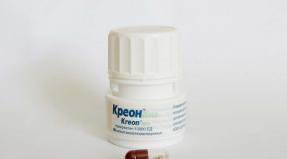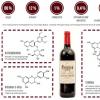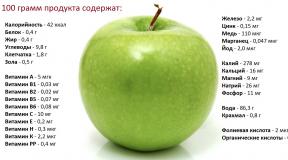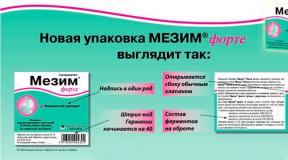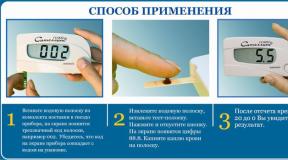Cholesterol in a blood test
A blood test for cholesterol is one of the most important studies that helps to assess the level of cholesterol bodies in the blood, which may indicate a person’s health. A timely study helps to identify the presence of pathologies in the early stages (vascular atherosclerosis, thrombophlebitis, coronary heart disease). It is recommended to donate blood for cholesterol at least once a year, which will be enough for self-monitoring of general health. What the decoding of the results of the analysis says, and what it is by its nature, we will analyze further.
Before proceeding to consider the decoding, you need to understand what cholesterol is. Cholesterol is a fat-soluble compound that is produced by the cells of the liver, kidneys and adrenal glands in order to strengthen cell membranes, normalizing their permeability. Also, these cells perform the following useful functions for the body:
- participate in the process of synthesis and absorption of vitamin D;
- involved in the synthesis of bile;
- allow red blood cells to avoid premature hemolysis (decay);
- take an active part in the production of steroid hormones.
These fairly important functions of cholesterol indicate its high importance for the body. However, if its concentration is higher than normal, health problems may develop.
Cholesterol itself does not dissolve in water, therefore, for its full transportation and utilization, special protein molecules - apoproteins - are needed. When cholesterol cells are attached to apoproteins, a stable compound is formed - lipoprotein, which dissolves easily and is transported faster through the blood vessels.
Depending on how many protein molecules are attached to a cholesterol molecule, lipoproteins can be divided into several categories:
- Very low density lipoproteins (VLDL) - one molecule accounts for a third of the protein molecule, which is catastrophically small for the full movement and removal of cholesterol. This process contributes to its accumulation in the blood, which leads to blockage of blood vessels and the development of various diseases.
- Low-density lipoproteins (LDL) - there is less than one molecule of protein per molecule. Such compounds are inactive and poorly soluble, so they are most likely to settle in the vessels.
- High-density lipoproteins (HDL) are more stable compounds that are well transported and water-soluble.
- Chylomicrons are the largest cholesterol particles with moderate mobility and poor solubility in water.
Cholesterol in the blood is needed, but some of its varieties can provoke the development of diseases. Therefore, low density lipoproteins are considered to be bad cholesterol, which leads to blockage of blood vessels. At the same time, high-density lipoproteins are the guarantor of the health and usefulness of all metabolic processes in the body. Biochemistry allows you to identify a predisposition to the development of diseases associated specifically with the quantitative and qualitative composition of cholesterol in the blood.
Blood test for cholesterol: main indicators and their norm
In order to identify the concentration and presence of all types of cholesterol in the blood, a special analysis is used, the results of which are included in the lipid profile. This includes indicators such as total cholesterol, triglycerides, high density lipoprotein, low density lipoprotein, atherogenic index. Cholesterol in a blood test is determined using a biochemical blood test. A detailed analysis allows you to see possible health problems that are provoked by an increase in the concentration of bad cholesterol. A general blood test shows only a superficial picture, so if its results are abnormal, then it makes sense to conduct a more detailed study.
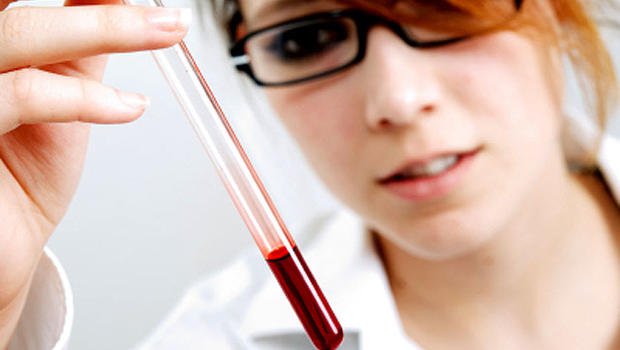
total cholesterol
The indicator of total cholesterol in blood plasma shows its concentration in mmol / l. This indicator characterizes the general condition of blood vessels and blood, and can also indicate the quality of metabolic processes. It is this analysis that is the main one, since it is used to assess the state of health, as well as the need for an additional, narrower (HDL, LDL) study.
The normal indicator directly depends on such characteristics as age and gender. Consider the values of the norm of total cholesterol for different age and gender groups, which the table contains.
| Age | Men, mmol/l | Women, mmol/l |
| Newborns and children under 2 years old | 1,9-3 | 2,9-5,1 |
| 2-12 years old | 2-4 | 2,9-5 |
| 16-20 years old | 2,9-4,9 | 3,5-5,17 |
| 21-30 years old | 3,5-6,5 | 3,3-5,8 |
| 31-50 years old | 4-7,5 | 3,9-6,9 |
| 51-65 years old | 4-7,1 | 4,5-7,7 |
| Over 65 years old | 4-7 | 4,2-7,8 |
Total cholesterol is directly related to the metabolic processes occurring in the body and dietary habits, so its values are different throughout life. During hormonal formation, the indicators tend to the lower limit, and closer to old age, when the metabolism is significantly slowed down, its rate is several times higher.
low density lipoproteins
This category of cholesterol is the most dangerous, therefore, such maximum permissible values \u200b\u200bare distinguished as 2.3-4.7 mmol / l for men and 1.9-4.2 mmol / l for women. Exceeding the norms of these indicators indicates the presence of diseases of the cardiovascular system, as well as a slowdown in metabolic processes.
high density lipoproteins
"Good" cholesterol should also be in moderation. The values for men are 0.7-1.8 mmol / l and 0.8-2.1 mmol / l for women. This framework includes age variation, taking into account data at birth and in old age.
Triglycerides
In men, the upper limit reaches 3.6 mmol / l, while the norm in women is slightly less - 2.5 mmol / l. This is due to the peculiarities of nutrition, since the male body requires more carbohydrates and fats. A biochemical blood test helps to determine the level of triglycerides, relative to the total volume of blood in the body.

Atherogenic index
This indicator is one of the key in the lipid profile, allowing you to evaluate the percentage of bad and good cholesterol. The indicator obtained as a result of mathematical calculations indicates the presence of diseases that occur in a latent form, as well as a predisposition to pathologies. The atherogenic index is calculated by the formula:
Total Cholesterol - High Density Lipoprotein / Low Density Lipoprotein
The norm of cholesterol can vary depending on age. Children under 6 years of age suggest an atherogenic index of up to 2 mmol / l. At a young age, this figure reaches 2.5 mmol / l, but does not exceed it. Closer to 50 years, the indicator can reach 2.8-3.2 mmol / l. In the presence of diseases and vascular pathologies, the indicator can reach -7 mmol / l, which will determine the biochemical blood test.
Decryption
After blood is taken from a person, it is carefully examined, and all the results of the studies are recorded in a table. Deciphering a blood test for cholesterol involves the presence of a table that consists of several columns:
- Names of the object under study - it can be total cholesterol, triglycerides or its other components.
- Blood level - indicated in mmol / l.
- The indicator of the norm - boundary values \u200b\u200bare given so that a person can see how much his indicators differ from the generally accepted ones.
- Conclusion - this column displays the true picture of the state of human health, where opposite each object under study is indicated, the norm, increased or critically increased level.
Visually, the decryption may look like this:
| Name | Indicator | Limits of norms | Meaning |
| total cholesterol | 4.3 mmol/l | 3.5-6.5 mmol/l | Norm |
| LDL | 4.8 mmol/l | 2.3-4.7 mmol/l | Slightly upgraded |
| HDL | 0.9 mmol/l | 0.7-1.8 mmol/l | Norm |
| Triglycerides | 3.1 mmol/l | 1-3.6 mmol/l | Norm |
| Atherogenic index | 0.7 mmol/l | 0.5-3.2 mmol/l | Norm |
It should be understood that the results obtained may differ from the real indicators, which is influenced by factors such as:
- Nutrition - if a person ate fatty and sweet foods before taking blood, the values \u200b\u200bmay be several times higher than normal.
- The use of alcoholic beverages.
- Prolonged fasting.
- Physical activity the day before.
- The use of drugs that affect the chemical composition of the blood.
Some laboratories use the Latin designation for all analysis indicators. The designation of cholesterol in a blood test is as follows:
- TC is total cholesterol.
- LDL - low density lipoprotein.
- HDL - high density lipoproteins.
- TG is the amount of triglycerides.
- IA - the ratio of bad and good cholesterol to its total mass in the blood (atherogenicity index).
These indicators are indicated by letters, which facilitates their identification and reduces the space in the decoding. Not everyone knows how cholesterol is indicated in the analysis, so many transcripts use more understandable letter designations next to the letters of the Latin alphabet.
How and when to take the analysis?
Experts recommend taking cholesterol tests at least once a year if there are no health complaints, and every six months, provided that there are problems with excess weight, blood vessels and heart. Self-control will reduce the risk of developing life-threatening pathologies, as well as reduce the likelihood of premature death.
Blood is taken from a vein, but before the procedure, you should undergo training:
- Do not eat 5-6 hours before blood sampling.
- Do not drink alcohol the night before.
- Eat normally, limiting sugary and fatty foods.
- Reduce physical and mental stress.
- Good to rest and sleep.
- Avoid stress and emotional upheaval.
The analysis helps not only to control the state of health, but also to show the dynamics of the treatment of certain diseases.
Thus, deciphering a blood test for cholesterol contains several indicators, each of which is of high importance. This analysis is mandatory for overweight people with heart and cardiovascular problems. The transcript given to patients in the laboratory is quite simple and contains a small amount of data. This allows you to assess the level of your health on your own, before consulting a specialist.


